Abstract
For 3 months, 259 cultures of Pseudomonas aeruginosa isolated from nonpatient environmental sources and 262 cultures from 16 infected patients in the Intensive Care Unit (ICU) of Shriners Burns Hospital were typed by a combined system with a high degree of reliability. Sinks were major sources of environmental contamination. Serotypes 1 and 2 were the predominant types found in patients, and they were most prevalent among typable strains from sinks. Strain designations were made on the basis of similarities in data from serological and phage typing. All nontypable strains were typed by pyocin production. Two infected patients carried different strains of P. aeruginosa that remained the same type for 45 days, even though their beds in ICU were approximately 6 feet apart. Cross-contamination from patient to patient and spread of infection by nursing personnel were eliminated as major modes of transmission because nasopharyngeal swabs, hair samples, and hands of nursing staff were consistently negative. Splashing of water from contaminated sinks to fomites was suggested as a possible mode of transfer for this infectious agent.
Full text
PDF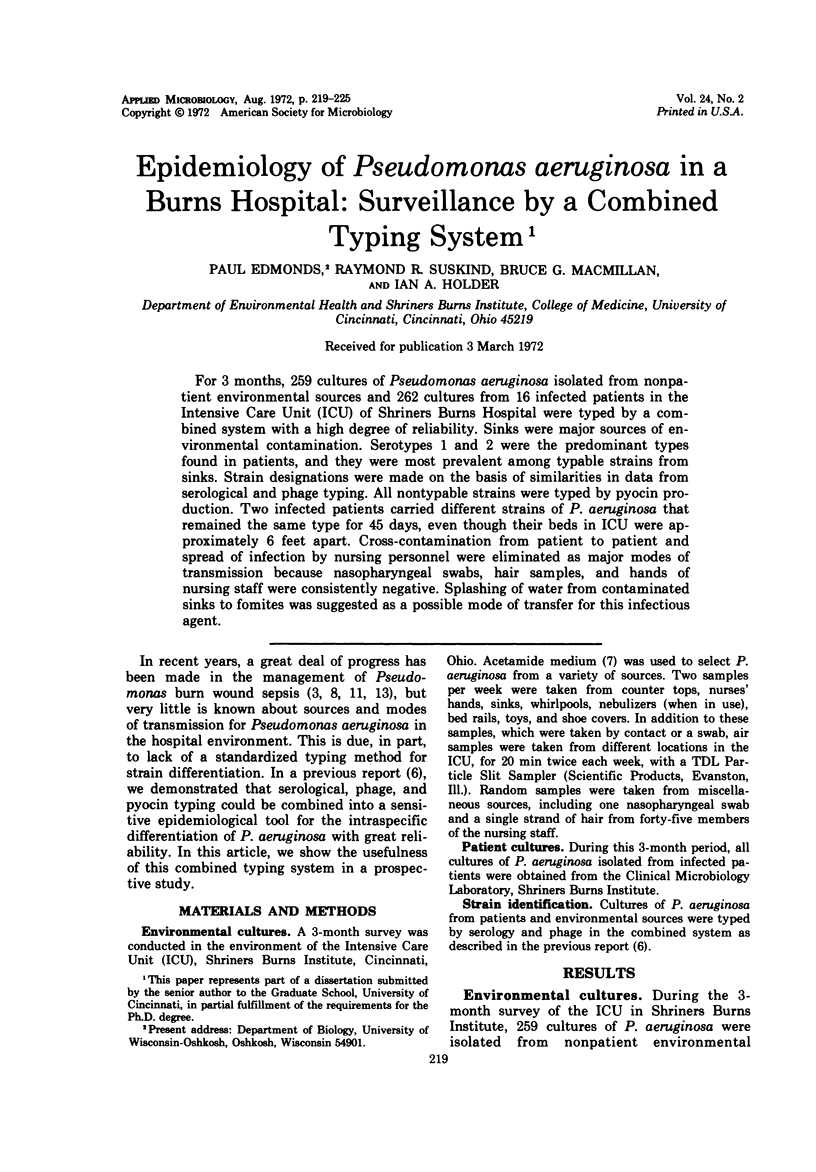
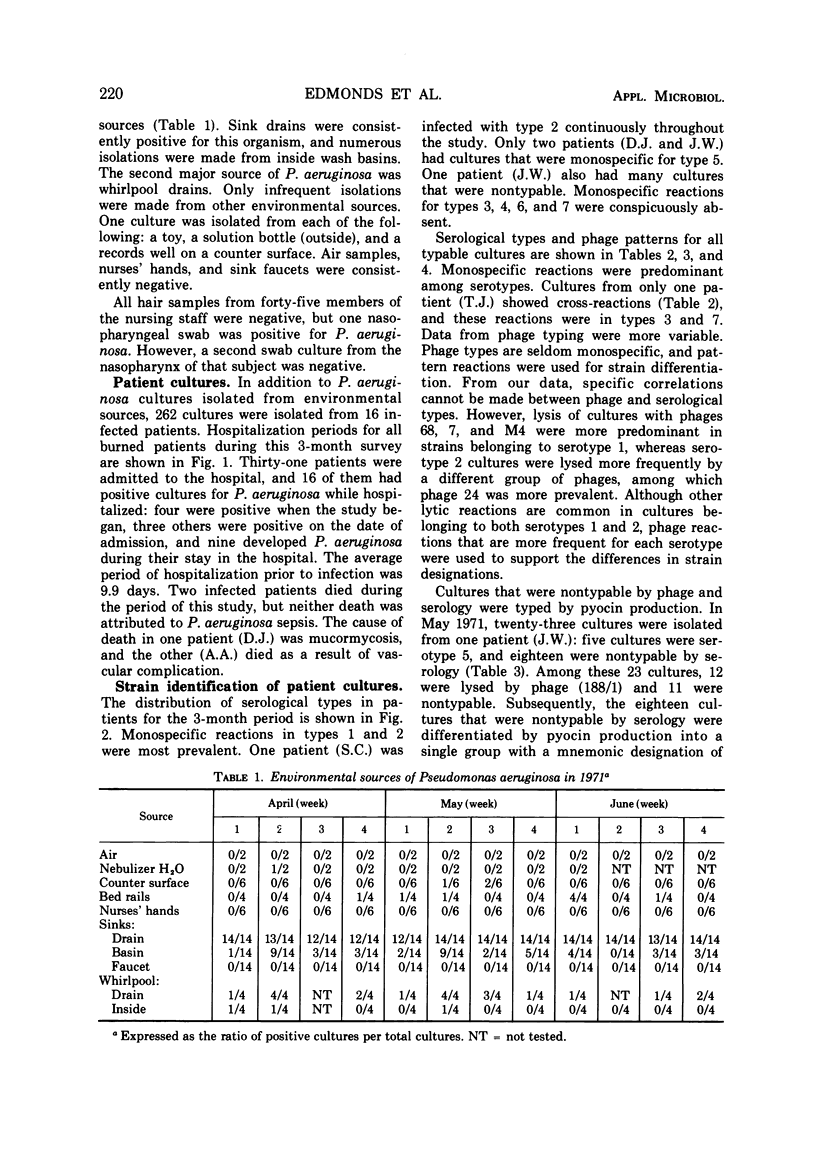
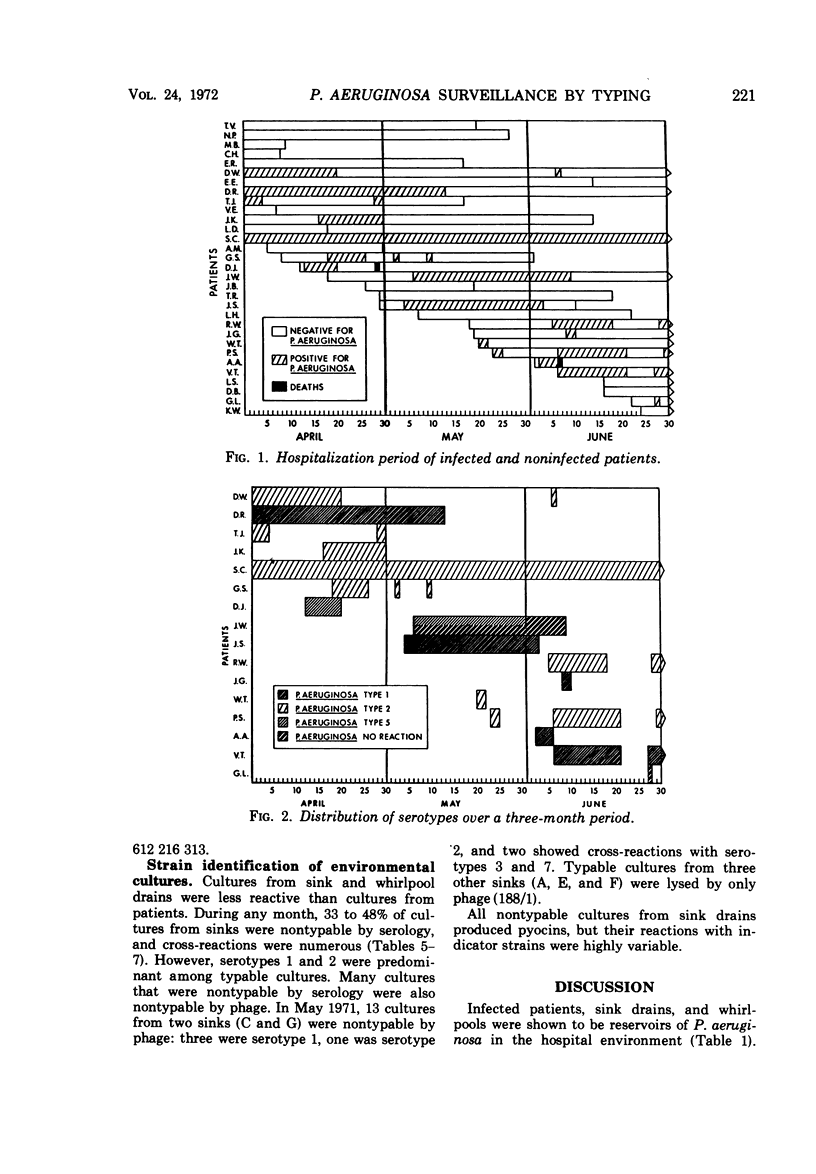
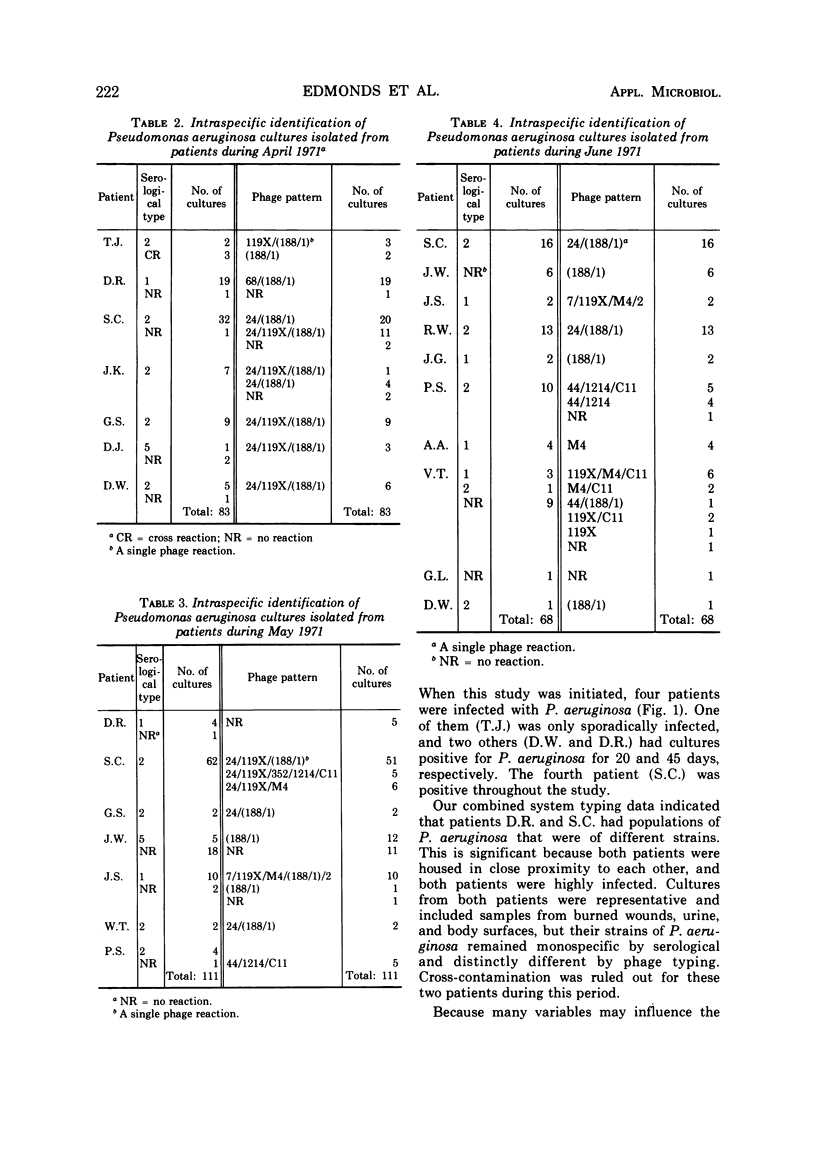
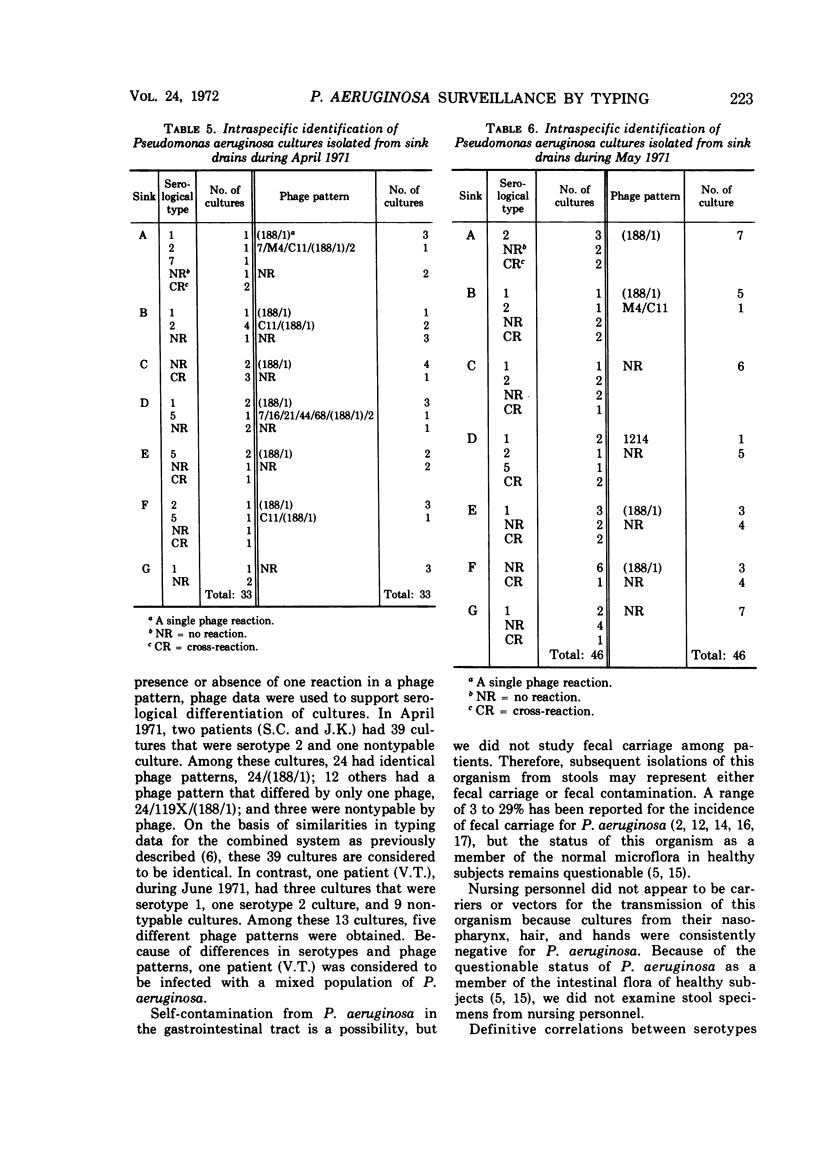
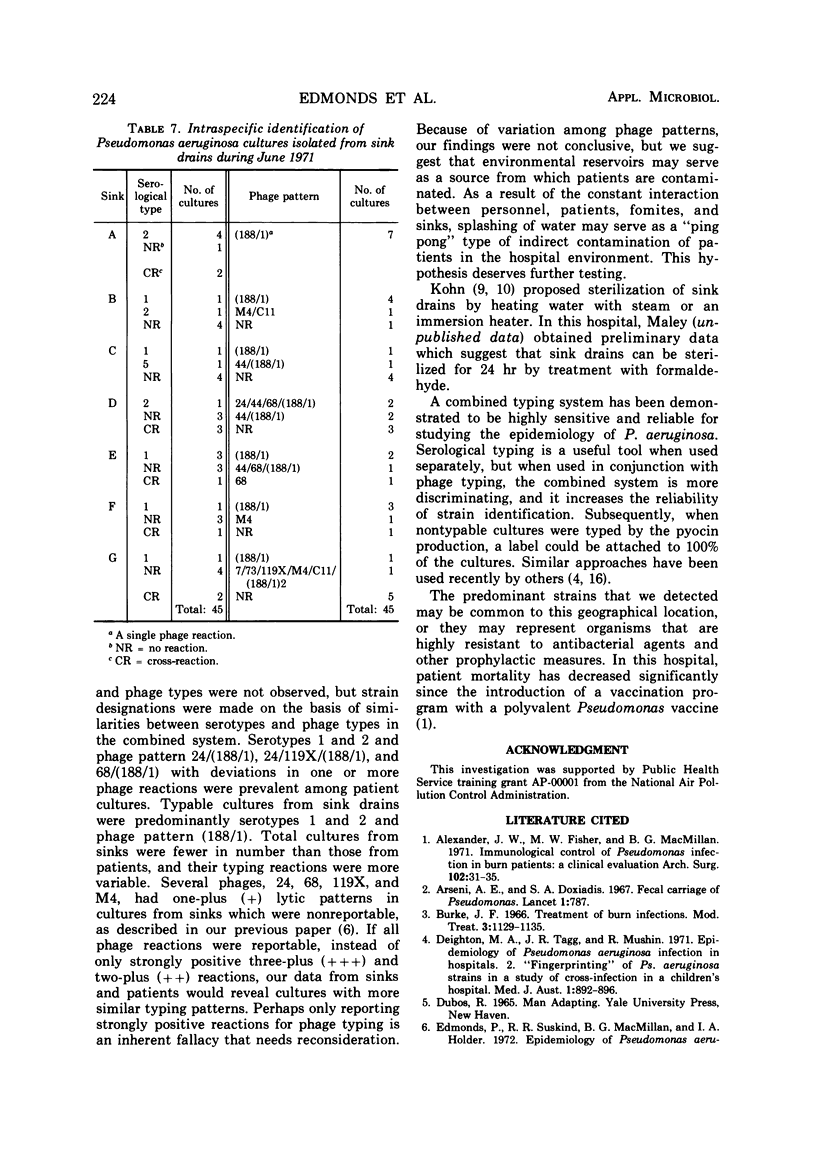
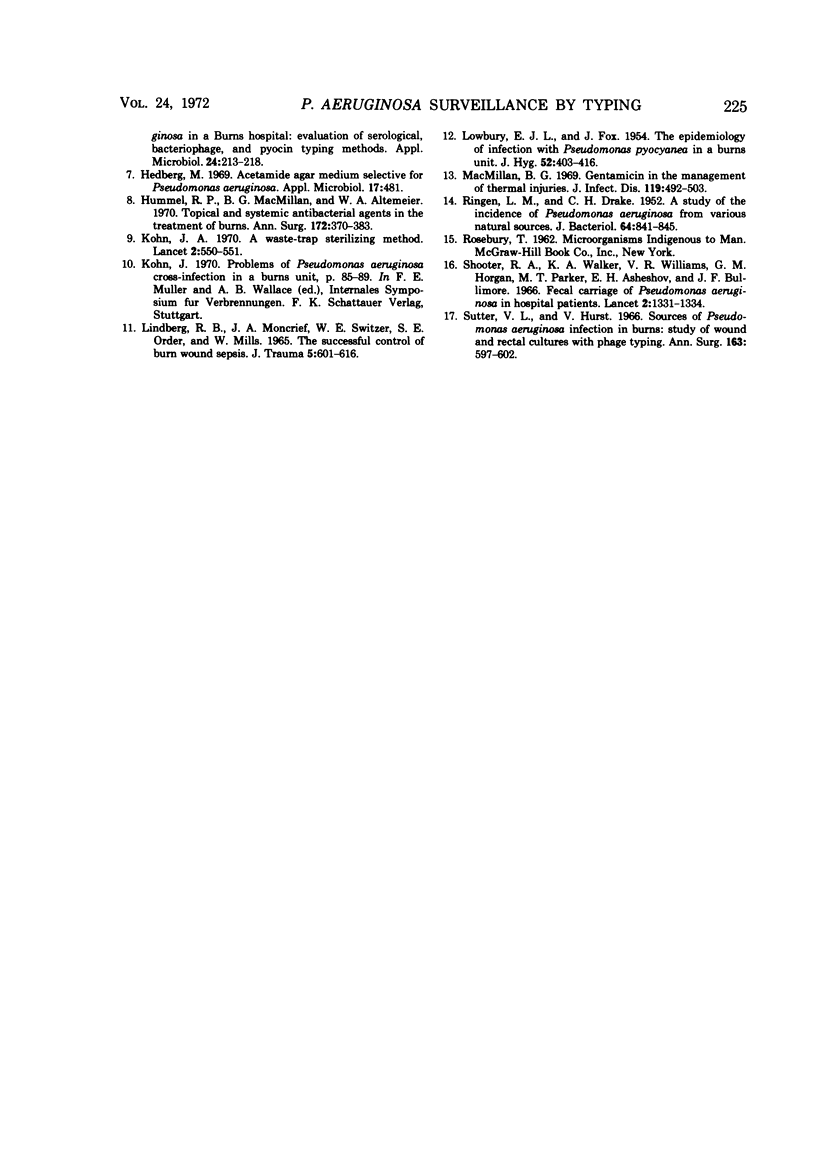
Selected References
These references are in PubMed. This may not be the complete list of references from this article.
- Alexander J. W., Fisher M. W., MacMillan B. G. Immunological control of Pseudomonas infection in burn patients: a clinical evaluation. Arch Surg. 1971 Jan;102(1):31–35. doi: 10.1001/archsurg.1971.01350010033008. [DOI] [PubMed] [Google Scholar]
- Burke J. F. Treatment of burn infections. Mod Treat. 1966 Sep;3(5):1129–1135. [PubMed] [Google Scholar]
- Collis J. M., Bethune D. W. Oxygen by face mask and nasal catheter. Lancet. 1967 Apr 8;1(7493):787–788. doi: 10.1016/s0140-6736(67)91400-6. [DOI] [PubMed] [Google Scholar]
- Deighton M. A., Tagg J. R., Mushin R. Epidemiology of Pseudomonas aeruginosa infection in hospitals. 2. "Fingerprinting" of Ps. aeruginosa strains in a study of cross-infection in a children's hospital. Med J Aust. 1971 Apr 24;1(17):892–896. [PubMed] [Google Scholar]
- Edmonds P., Suskind R. R., Macmillan B. G., Holder I. A. Epidemiology of pseudomonas aeruginosa in a burn hospital: evaluation of serological, bacteriophage, and pyocin typing methods. Appl Microbiol. 1972 Aug;24(2):213–218. doi: 10.1128/am.24.2.213-218.1972. [DOI] [PMC free article] [PubMed] [Google Scholar]
- Hedberg M. Acetamide agar medium selective for Pseudomonas aeruginosa. Appl Microbiol. 1969 Mar;17(3):481–481. doi: 10.1128/am.17.3.481-481.1969. [DOI] [PMC free article] [PubMed] [Google Scholar]
- Hummel R. P., MacMillan B. G., Altemeier W. A. Topical and systemic antibacterial agents in the treatment of burns. Ann Surg. 1970 Sep;172(3):370–384. doi: 10.1097/00000658-197009000-00007. [DOI] [PMC free article] [PubMed] [Google Scholar]
- Kohn J. A waste-trap-sterilising method. Lancet. 1970 Sep 12;2(7672):550–551. doi: 10.1016/s0140-6736(70)91351-6. [DOI] [PubMed] [Google Scholar]
- LOWBURY E. J., FOX J. The epidemiology of infection with Pseudomonas pyocyanea in a burns unit. J Hyg (Lond) 1954 Sep;52(3):403–416. doi: 10.1017/s0022172400027601. [DOI] [PMC free article] [PubMed] [Google Scholar]
- Lindberg R. B., Moncrief J. A., Switzer W. E., Order S. E., Mills W., Jr The successful control of burn wound sepsis. J Trauma. 1965 Sep;5(5):601–616. doi: 10.1097/00005373-196509000-00004. [DOI] [PubMed] [Google Scholar]
- MacMillan B. G. Gentamicin in the management of thermal injuries. J Infect Dis. 1969 Apr-May;119(4):492–503. doi: 10.1093/infdis/119.4-5.492. [DOI] [PubMed] [Google Scholar]
- RINGEN L. M., DRAKE C. H. A study of the incidence of Pseudomonas aeruginosa from various natural sources. J Bacteriol. 1952 Dec;64(6):841–845. doi: 10.1128/jb.64.6.841-845.1952. [DOI] [PMC free article] [PubMed] [Google Scholar]
- Shooter R. A., Walker K. A., Williams V. R., Horgan G. M., Parker M. T., Asheshov E. H., Bullimore J. F. Faecal carriage of Pseudomonas aeruginosa in hospital patients. Possible spread from patient to patient. Lancet. 1966 Dec 17;2(7477):1331–1334. doi: 10.1016/s0140-6736(66)92082-4. [DOI] [PubMed] [Google Scholar]
- Sutter V. L., Hurst V. Sources of Pseudomonas aeruginosa infection in burns: study of wound and rectal cultures with phage typing. Ann Surg. 1966 Apr;163(4):597–602. doi: 10.1097/00000658-196604000-00013. [DOI] [PMC free article] [PubMed] [Google Scholar]


